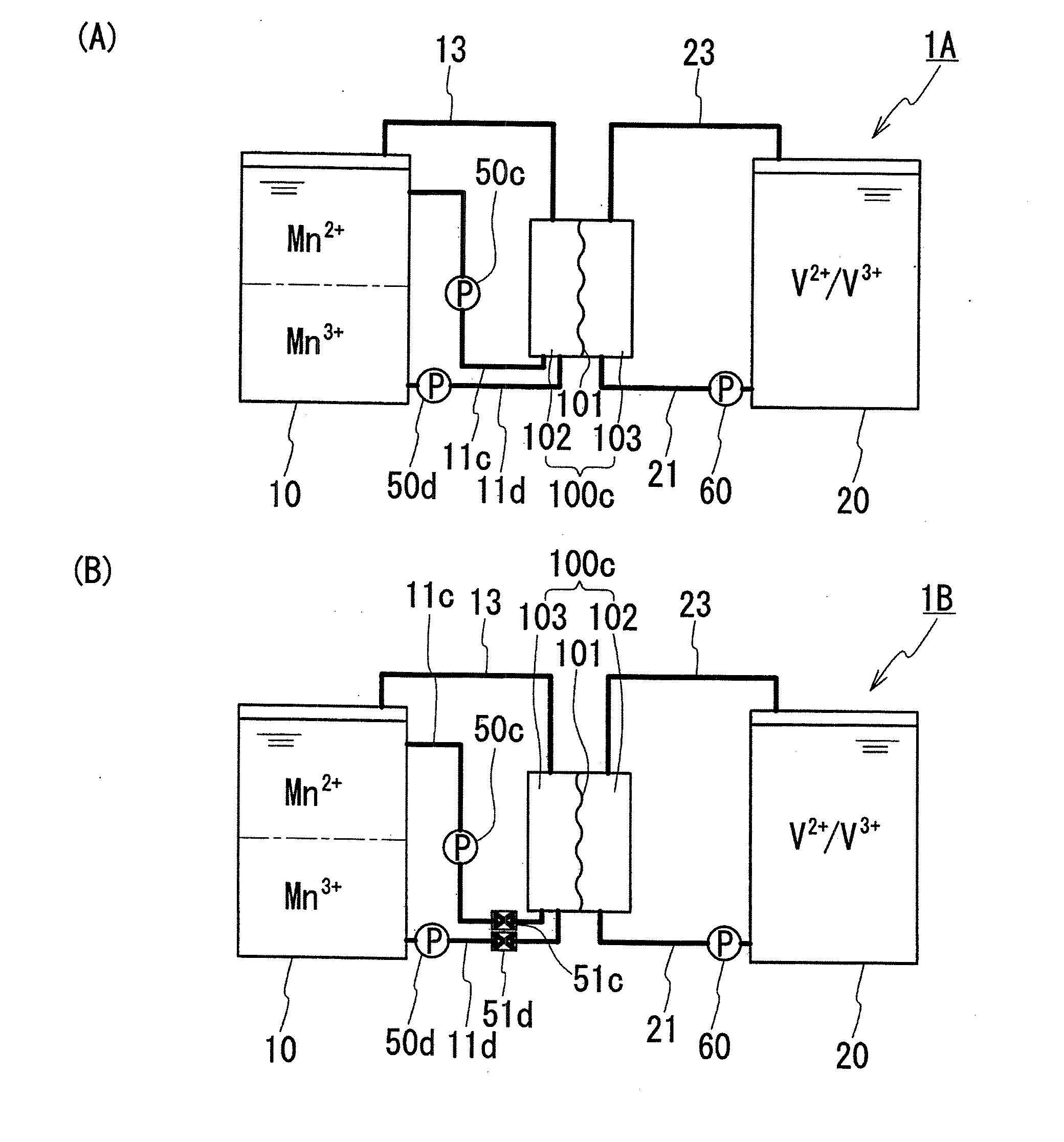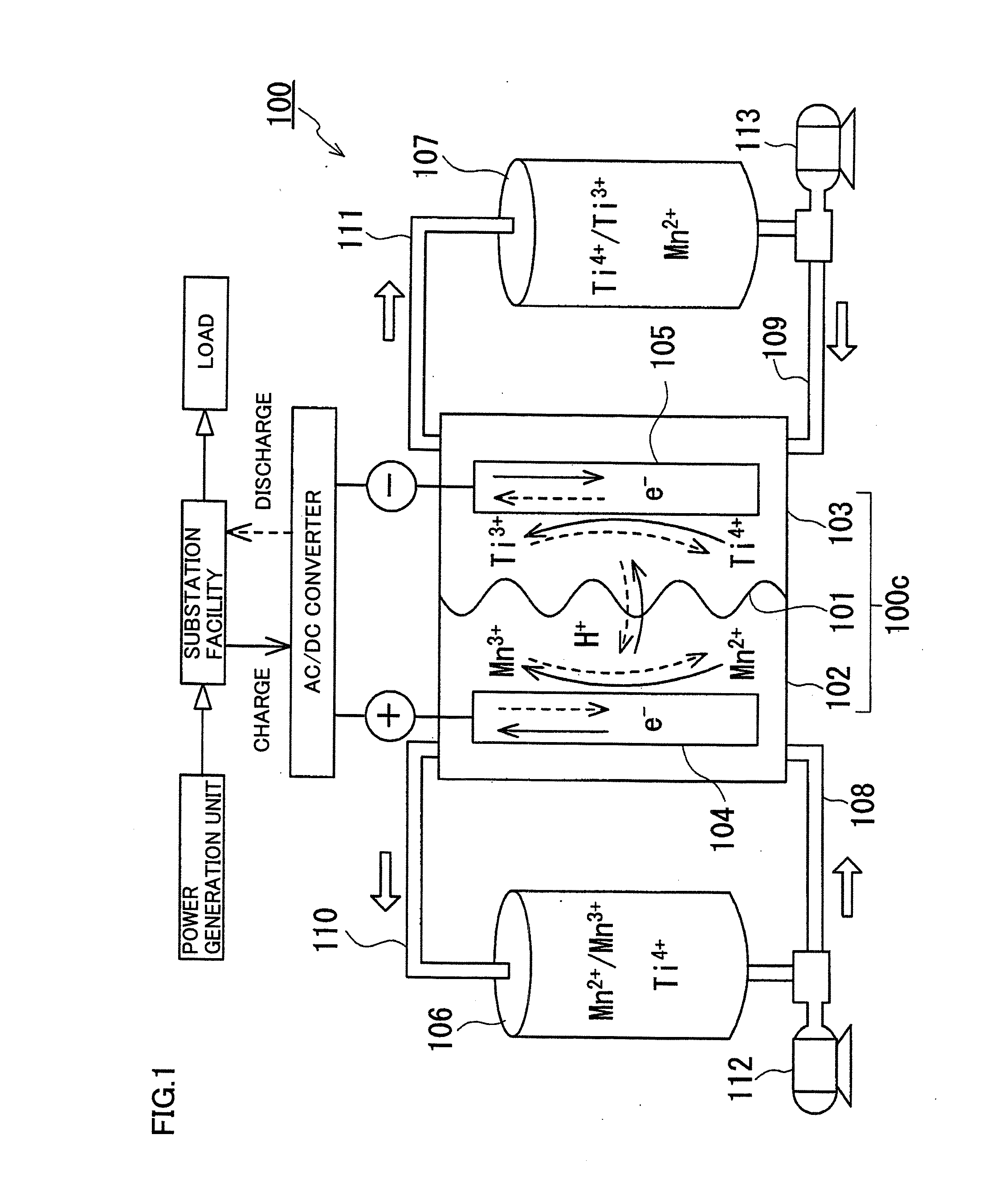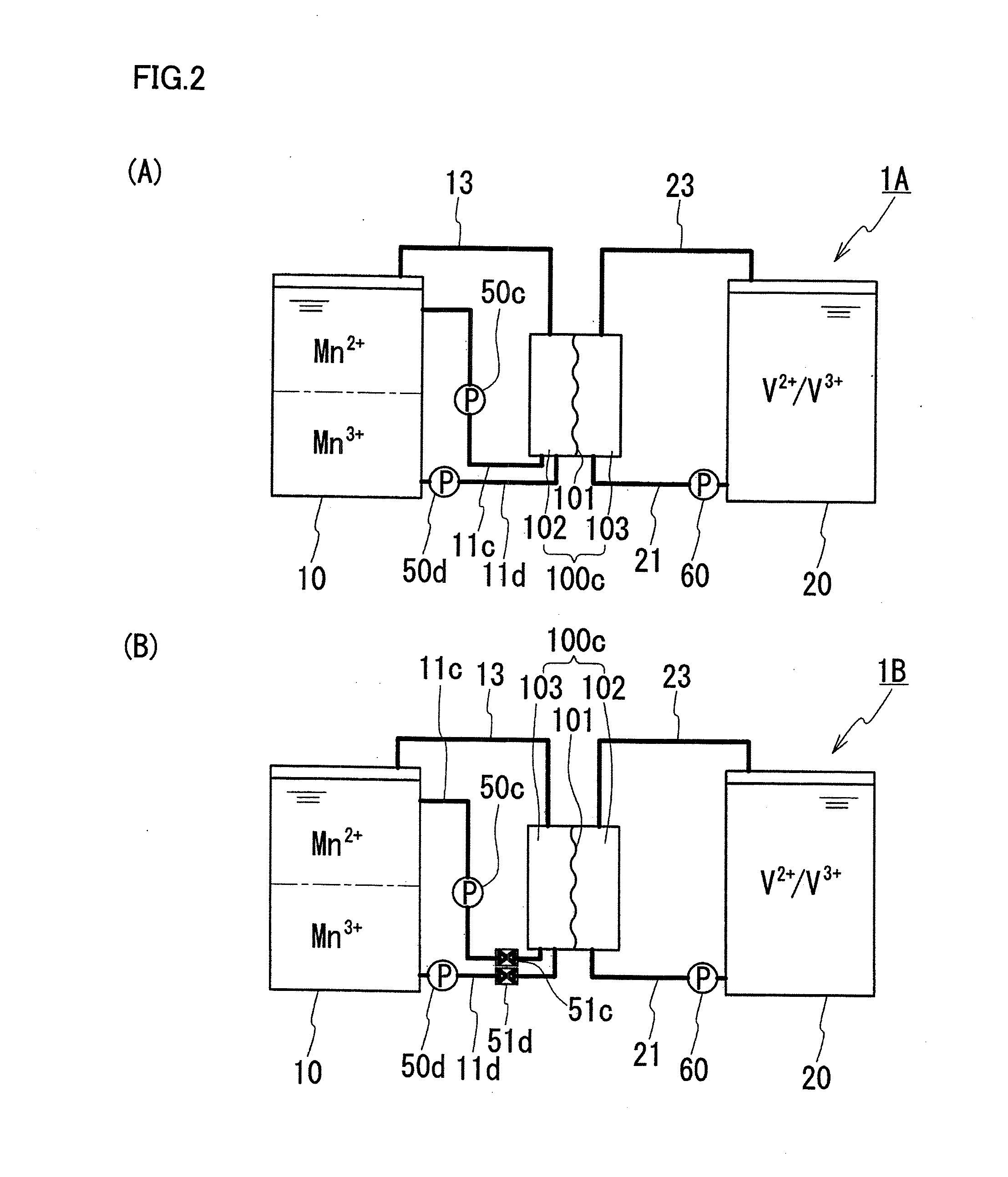Redox flow battery
a technology of redox flow and battery, applied in the direction of indirect fuel cells, cell components, electrochemical generators, etc., can solve the problems of difficulty in maintaining frequency and voltage, power system operation, etc., and achieve stable charge and discharge characteristics, high electromotive force, and high electromotive force
- Summary
- Abstract
- Description
- Claims
- Application Information
AI Technical Summary
Benefits of technology
Problems solved by technology
Method used
Image
Examples
embodiments 1 to 12
[0095]Embodiments 1 to 12 are described below. RF batteries in Embodiments 1 to 12 have the above-described basic structure, and are characterized by including at least one of the above-described features (1) and (2).
embodiment 1
[0096]Referring to FIG. 2, an RF battery 1A in Embodiment 1 is described. RF battery 1A in Embodiment 1 has the above-described basic structure, and is characterized by using an electrolyte containing a Mn ion as a positive electrode active material as a positive electrode electrolyte, and by including two upstream pipes on the positive electrode side. These characteristic points will be mainly described below.
[0097][Electrolytes]
[0098]The positive electrode electrolyte contains at least one species of Mn ion selected from a divalent Mn ion (Mn2+) and a trivalent Mn ion (Mn3+). A study by the present inventors found that MnO2 can also be utilized as an active material. Accordingly, the present invention allows inclusion of tetravalent manganese (MnO2).
[0099]The negative electrode electrolyte contains, for example, as a negative electrode active material, at least one species of metal ion selected from a titanium ion, a vanadium ion, a chromium ion, a zinc ion, and a tin ion. A manga...
embodiment 2
[0112]An RF battery 1B in Embodiment 2 shown in FIG. 2(B) has a basic structure similar to that of RF battery 1A in Embodiment 1. RF battery 1B in Embodiment 2 is different in that it includes, in addition to the structure of RF battery 1A in Embodiment 1 shown in FIG. 2(A), on / off valves 51c and 51d provided on positive electrode charging pipe 11c and positive electrode discharging pipe 11d, respectively. This difference will be mainly described below, and the structure and effects common to RF battery 1A in Embodiment 1 will not be described in detail.
[0113]In RF battery 1B in Embodiment 2, a desired positive electrode electrolyte can be more reliably supplied to battery element 100c by operation of opening / closing on / off valves 51c and 51d, in addition to the control of supply of the positive electrode electrolyte by driving / stopping positive electrode pumps 50c and 50d. More specifically, during charge, the positive electrode electrolyte can be supplied from the liquid level sid...
PUM
| Property | Measurement | Unit |
|---|---|---|
| inner diameter | aaaaa | aaaaa |
| oxidation-reduction potentials | aaaaa | aaaaa |
| oxidation-reduction potentials | aaaaa | aaaaa |
Abstract
Description
Claims
Application Information
 Login to View More
Login to View More - R&D
- Intellectual Property
- Life Sciences
- Materials
- Tech Scout
- Unparalleled Data Quality
- Higher Quality Content
- 60% Fewer Hallucinations
Browse by: Latest US Patents, China's latest patents, Technical Efficacy Thesaurus, Application Domain, Technology Topic, Popular Technical Reports.
© 2025 PatSnap. All rights reserved.Legal|Privacy policy|Modern Slavery Act Transparency Statement|Sitemap|About US| Contact US: help@patsnap.com



